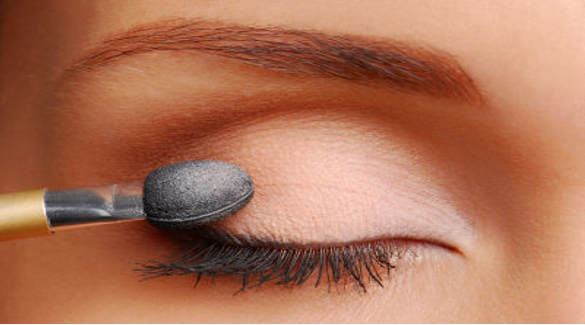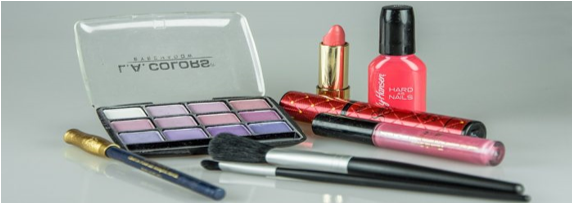Fertility Destroyers In Your Cosmetic Bag

When was the last time you REALLY LOOKED at the ingredient labels on your personal care and make up products?
What you put on your body is just as important as what you put in it. Your skin is the largest organ in your body, and it absorbs everything including these toxins. And because it takes less than 30 seconds for the chemicals in your beauty products to enter your blood stream and with the average women putting 168 toxic chemicals on her skin each day, it is worth paying attention to.
In future, before buying personal care products such as shampoos, conditioners, body lotions, deodorants, toothpastes, nail polish, sunscreens, make up or baby care products, be sure to check the ingredient lists.
If you value your (and your partner’s) fertility and the health of your unborn child reject any product containing these hormone disrupting and fertility destroying toxins.
Here are just some of the nasties that are lurking in our everyday products.
Methyl, Propyl, Butyl and Ethyl PARABENS are primarily used as preservatives, to prevent bacterial spoilage and extend product shelf life in cosmetics, pharmaceuticals & foods.
Up to 85% of personal care products contain parabens. Apart from causing allergic reactions and skin rashes, they are xenoestrogens i.e. they mimic oestrogen. They interact with hormone receptors in the body and have been linked to fertility issues in men and women, birth defects, and possible reproductive cancers.
A recent study found propyl paraben may be linked to diminished ovarian reserve (AMH) in women and decreased sperm count in males and have found parabens in human breast cancer tumors.
PHTHALATES are added to plastics to make them more flexible and resilient and are found in shampoos, nail polish (dibutyl phthalate), in perfumes and moisturizing lotions (diethyl phthalate), hairspray (dimethyl phthalate), deodorants, perfumes/colognes, soaps, detergents, and their soft plastic containers. Phthalates are also hormone disruptors and mimic oestrogen. They have been linked to increased risk of breast cancer, early breast development in girls, and reproductive birth defects in males and females. Unfortunately, they are not disclosed on every product as phthalates are often hidden on labels under the generic term “fragrance.”

TRICLOSAN is widely used antimicrobial chemical and is particularly disruptive to reproductive and thyroid hormones. Triclosan is associated with miscarriage, poor foetal development and is a skin irritant. It is found in toothpastes, mouthwashes, antibacterial soaps and hand washes. Studies have raised concerns that triclosan contributes to making bacteria antibiotic-resistant.
SODIUM LAURYL SULFATE (SLS) / SODIUM LAURETH SULFATE (SLES). These are foaming agents added to shampoo, body wash, shower gels, facial cleansers, toothpaste and even things like make-up foundations and mascara.
SLS’s are known to be skin, lung, and eye irritants. A major concern about SLS is its potential to interact and combine with other chemicals and becomes a carcinogen. Has been associated with decreased male fertility and increase in female cancers such as breast cancer.
FORMALDEHYDE is found in air fresheners, shampoos, baby washes/wipes, mascara, creams, carpets, particle board furniture. It has been associated with infertility, miscarriage and birth defects.
TOLUENE is made from petroleum or coal tar and is found in most synthetic fragrances and nail polish. Chronic exposure has been linked to anemia, lowered blood cell count, liver or kidney damage, and affects foetal development.
PROPYLENE GLYCOL The Environmental Protection Agency lists propylene glycol as an ingredient in fertilizer and automotive coolant or antifreeze. But it is also an ingredient in face creams and cosmetics!
The European Union says that this “may damage fertility or the unborn child.”
Studies of painters have linked exposure to certain glycol ethers to blood abnormalities, shrunken testicles and lower sperm counts. And children who were exposed to glycol ethers from paint in their bedrooms had substantially more asthma and allergies.

LEAD is found in many cosmetics but particularly in lipstick and lip glosses. Lipstick and glosses are often ingested over the course of the day so the impact of any toxin is heightened above and beyond skin absorption levels. Researchers from University of California found lead in 75 percent of the lipsticks and lip glosses they examined. Lead is associated with infertility, miscarriage, still birth, damage to central nervous system and brain in developing foetus and behaviour abnormalities. Many of lead’s side effects are irreversible.
After reading through that list I’m sure you will be wanting to switch to more organic, natural personal care products.
Need to know even more? http://www.ewg.org/skindeep/ is a very useful site to learn more about the potential harm you could be using on your skin. You can even research your particular products to see what harmful ingredients they may contain. There is a wealth of information here.
Want to know more about toxins that may be harming your fertility?
Still need help to get pregnant and take home a healthy baby?
Book your 20 minute complimentary discovery consultation HERE
